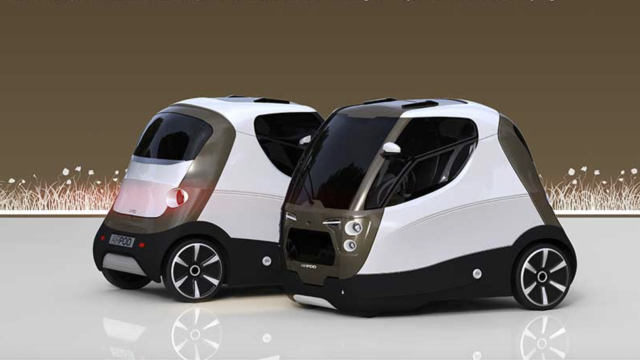Picture it: America, 2008. A nation entranced with Heath Ledger’s portrayal of the Joker, getting down to “Low” by Flo Rida featuring T-Pain … and paying an unheard-of $US4.31 ($6) for a gallon of regular unleaded. The energy crisis was on, and some put their hopes for a greener, more budget-friendly tomorrow on a hyper-efficient, compressed-air-powered car that seemed too good to be true. Per usual, it was.
If you account for inflation, we still haven’t hit the heights that an average gallon of gas cost in 2008. A gallon of regular in 2008 would cost $US5.66 ($8) in 2022 money, according to the Bureau of Labour Statistics. Everyone in 2008 was frantic for a way to save fuel. Obvious scams, secret driving tricks, and technological salvation all drew intense attention. “Hypermiling” was dubbed 2008’s word of the year by the New Oxford American Dictionary for crying out loud.
One of the daydream solutions to come out of this era was an $US18,000 ($24,988) ($US24,170 ($33,553) in today’s money) 106-mpg, six-seater concept car powered by compressed air. I came across this article published by CNN in August 2008 that sort of describes how it would work:
Whether the engine uses just air or both air and fuel would depend on how fast the car is going. It would run purely on compressed air at speeds less than 56 km/h, Vencat said. Since the car could only go a short distance when using just air, fuel is needed to get the full range, he explained. “Above 56 km/h, there is an external combustion system, which is basically a heater that uses a little bit of gasoline or biofuel or ethanol or vegetable oil that will heat the air,” Vencat said. “Heating the air increases its volume, and by increasing its volume, it increases [the car’s] range. That’s why with one gallon of gasoline or its equivalent we are able to make over 100 mpg.” Vencat said an on-board compressor would refill the air tank while the car is running, or owners could refill it by plugging it into a power outlet for four hours.
Compressed-air propulsion was having a moment back then. Tata Motors bought the rights to produce MDI’s technology for the whole continent of India in 2008. So you may be wondering: Where the heck is my super-efficient compressed-air-powered car? Both MDI and Zero Pollution Motors still exist, but it looks like neither is any closer to bringing an air-powered car to market.
Zero Pollution Motors promised its compressed-air cars would be in production by 2010. The founders appeared on the sixth season of the reality investment show Shark Tank in 2015 and managed to sell a 50-per cent stake in the company for $US5 ($7) million, though the deal fell through after the filming of the show.
The company hasn’t upgraded from a WordPress site, which is always a good sign of financial health for a manufacturer. You can put in an order for an AIRPod, which has fewer seats than promised but is also cheaper that the initially quoted $US18,000 ($24,988). Customers can reserve an AIRPod Baby for $US8,160 ($11,328), an AIRPod Cargo for $US9,520 ($13,216), or an AIRPod for $US10,880 ($15,104). The site assures customers that production will begin in the first quarter of 2019. It doesn’t seem that there has been much movement since then.
Tata Motors actually put the MDI engine into two of its vehicles in 2007 and found the technology worthy of further development. It announced ten years later, in 2017, that air-powered car would be available by 2020, according to the International Business Times. Clearly, that also hasn’t happened.
To be fair, people were pretty sceptical of the technology back in 2008, according to CNN:
Another expert expressed concern about the amount of energy it would take to generate the required air pressure: 2,041 kg per square inch, or more than 120 times the pressure inside the tires of a typical four-door sedan.
“That is above what you normally find even in an industrial setting,” said William Bulpitt, senior research engineer at the Georgia Institute of Technology’s Strategic Energy Institute.
“That takes quite a compressor to do…. It takes horsepower to compress the air up to that pressure.”
If you count that energy, it’s hard to believe the car would be that much more efficient than an electric vehicle, Callister said.
Now that an actual engineer mentions it, it does seem like a bad idea to have vehicles just rolling around in traffic with tanks full of extremely pressurised air. What would a crash that punctured the tank look like?
Guess the whole thing was just a lot of hot air.
